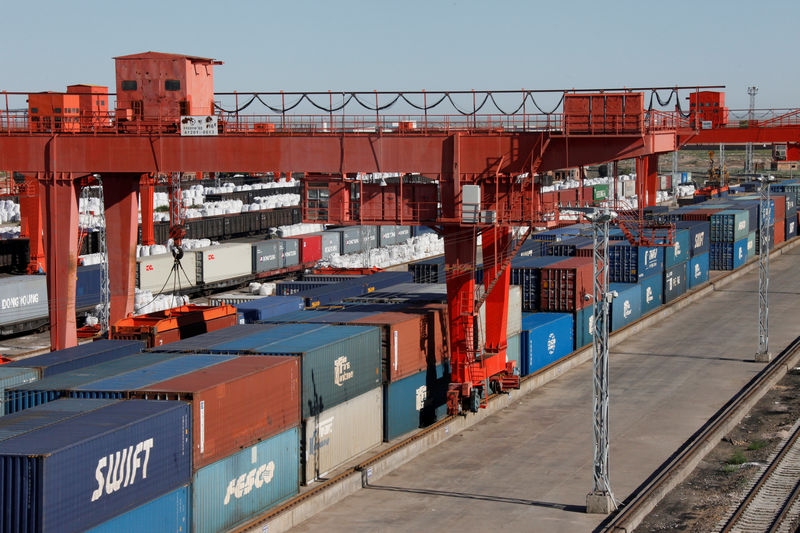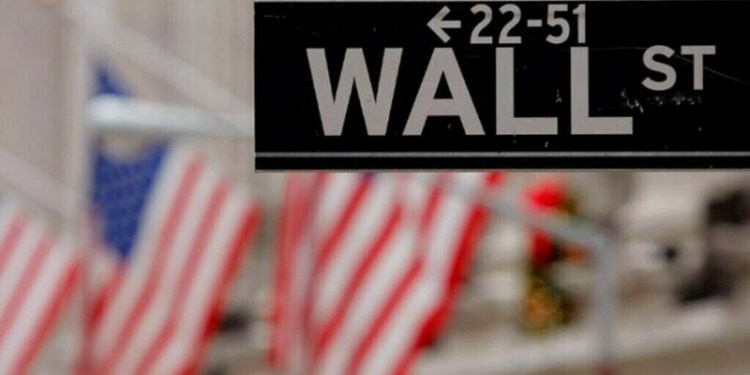 © Reuters. Shipping containers are seen stacked at the railway port in Erenhot
© Reuters. Shipping containers are seen stacked at the railway port in ErenhotBEIJING (Reuters) – Official Chinese data this week is expected to show export growth remained strong in August, despite rapidly escalating U.S. tariffs and signs of shrinking export orders, a Reuters poll showed.
But import growth, while still solid, is expected to downshift from July, adding to concerns about slowing domestic demand in the world’s second-largest economy that has prompted Beijing to shift toward policy easing.
Even with U.S. tariffs targeting $50 billion of Chinese exports going into effect for their first full month in August, Chinese shipments likely still rose 10.1 percent on-year, according to median estimates from 26 economists.
That would mark a slight decline from 12.2 percent in July but would still be the fifth month in a row of double-digit gains even as U.S. trade tensions flared.
More sweeping U.S. measures are on the way, with President Donald Trump’s administration expected to impose duties on another $200 billion of Chinese imports this month.
Some analysts believe Chinese exporters are continuing to rush out shipments ahead of further U.S. tariffs, buoying the headline growth readings, while some companies like steel mills are diversifying and selling more products to other countries.
Other economists have noted that disruptions in supply chains and prices are likely to be more company specific initially, and will take some time to be reflected in broader economy data and corporate earnings reports.
But official and private manufacturing surveys show global demand for Chinese goods is clearly on a softening trend, with export orders shrinking for the last few months in a row.
In a further tip that China’s supply chains are starting to feel the pinch, companies in some of its North Asian neighbors such as Japan are reporting weaker Chinese orders, business surveys showed.
China’s imports likely rose 18.7 percent in August on-year, slowing from July’s surprisingly high 27.3 percent growth and at odds with a decline suggested in the official factory survey.
Its overall trade surplus is expected to have expanded to $31.79 billion in August, from $28.05 billion the previous month.
SURPLUS WITH U.S. A KEY FOCUS
The trade surplus with the United States, a key point of contention for Trump, will be closely dissected.
Trump’s advisers have pointed to weakening in China’s economy and its tumbling stock markets as signs that Washington has the upper hand in the trade war.
So, Saturday’s data will be closely watched by all sides for signs of an impact from tariffs on $100 billion in two-way trade that went into effect on July 6.
China’s exports to the U.S. rose 11.2 percent in July, while its imports rose 11.1 percent.
China’s surplus with the U.S. swelled to a record $28.93 billion in June, and any further increase could further inflame the bitter dispute with Washington.
Trump’s threat to potential slap 25 percent tariffs on another $200 billion in Chinese exports this month would mark a serious escalation, which economists at Morgan Stanley (NYSE:) expect would push China to introduce more measures to support its economic growth, including boosting credit growth.
China has threatened tariffs on another $60 billion of U.S. imports at rates ranging from 5 percent to 25 percent, but it is running out of room to retaliate on a dollar-for-dollar basis.
“We expect that, if implemented, this latest set of tariffs would likely trigger a meaningful policy response from China, which has already embarked on a path of defensive easing,” the Morgan Stanley economists wrote in a report.
Morgan Stanley estimates the final impact of the tariffs, after considering the policy response, will reduce China’s GDP growth by 0.2 percentage point, with a 0.1 percentage point decline for U.S. GDP growth.
Source: Investing.com

























